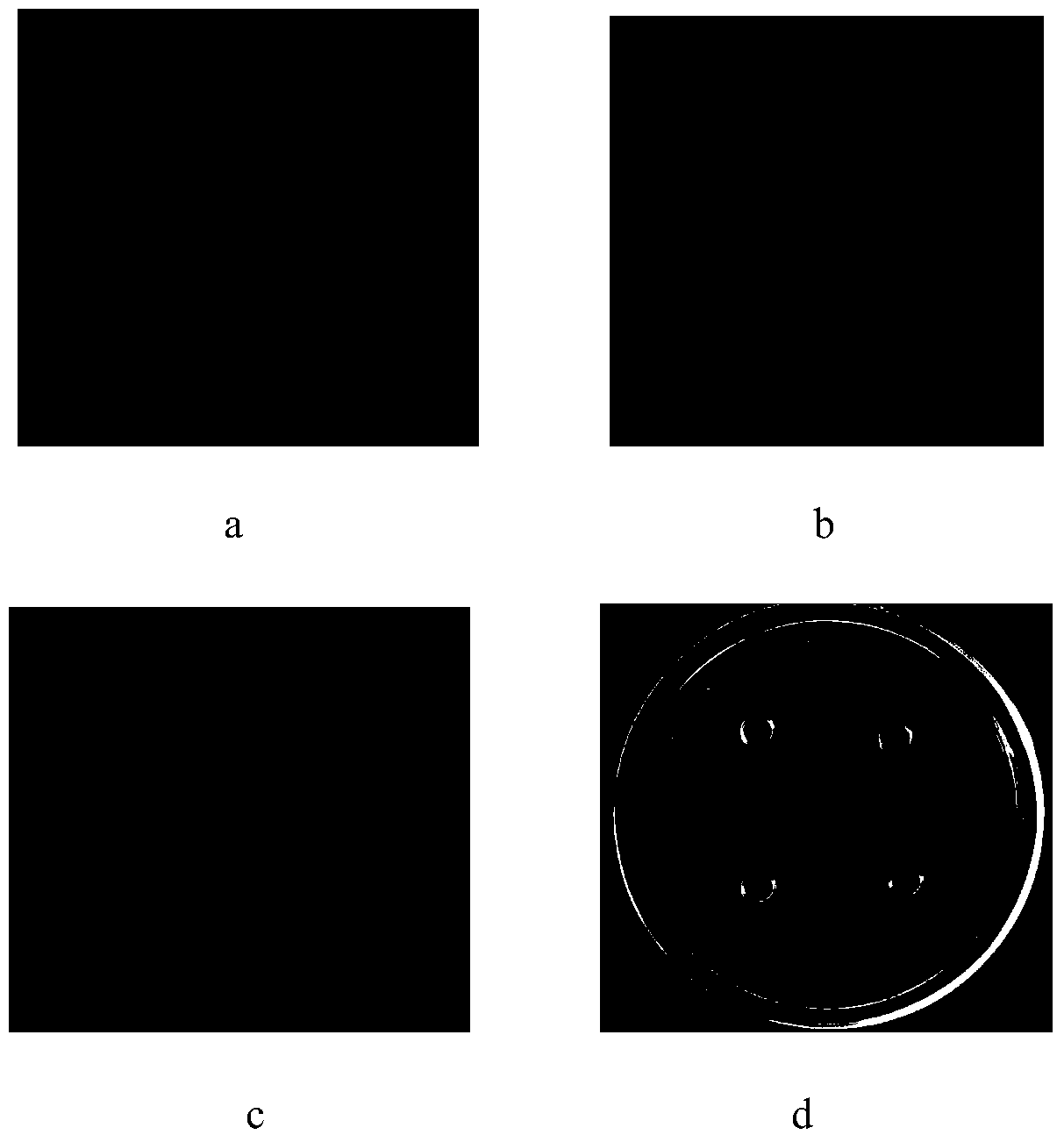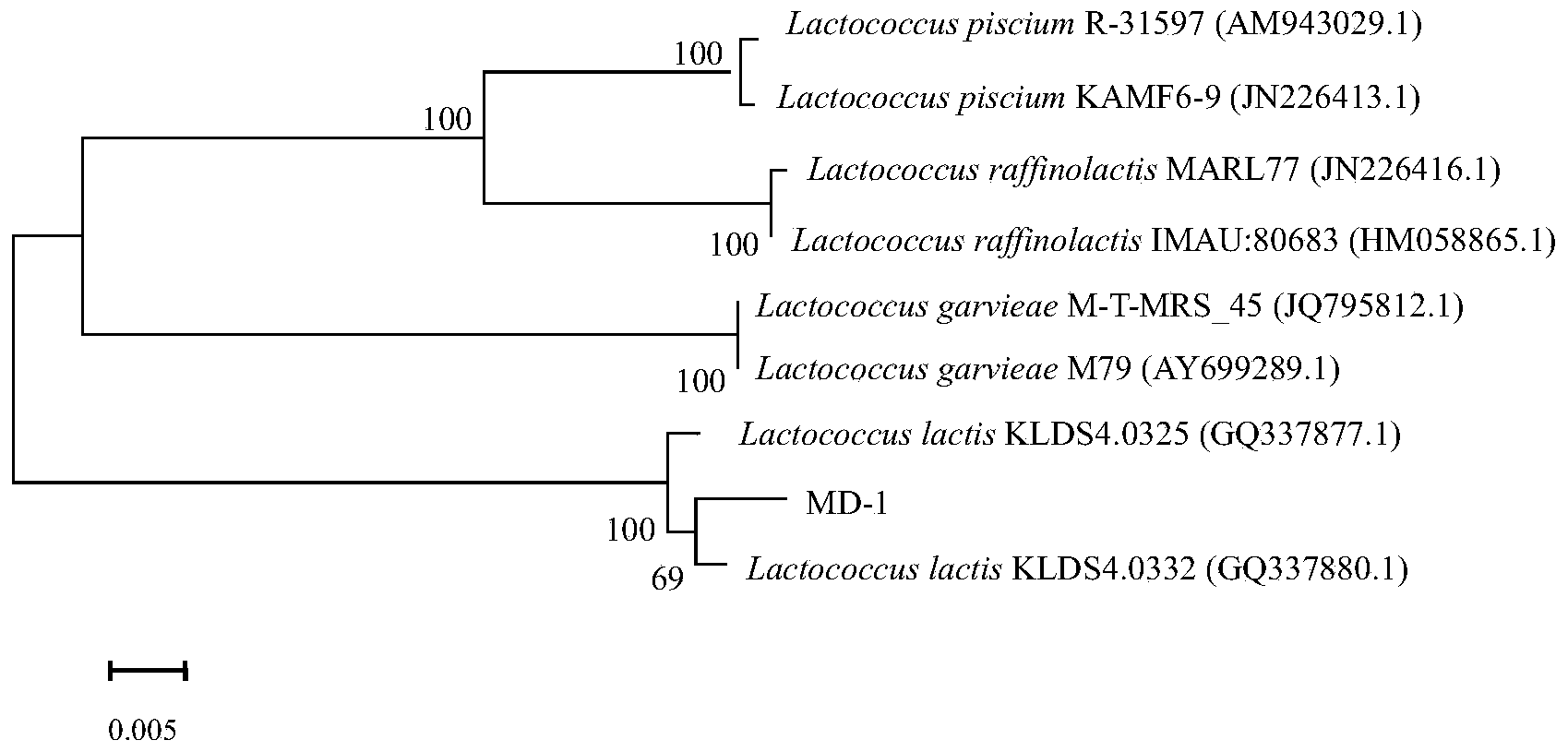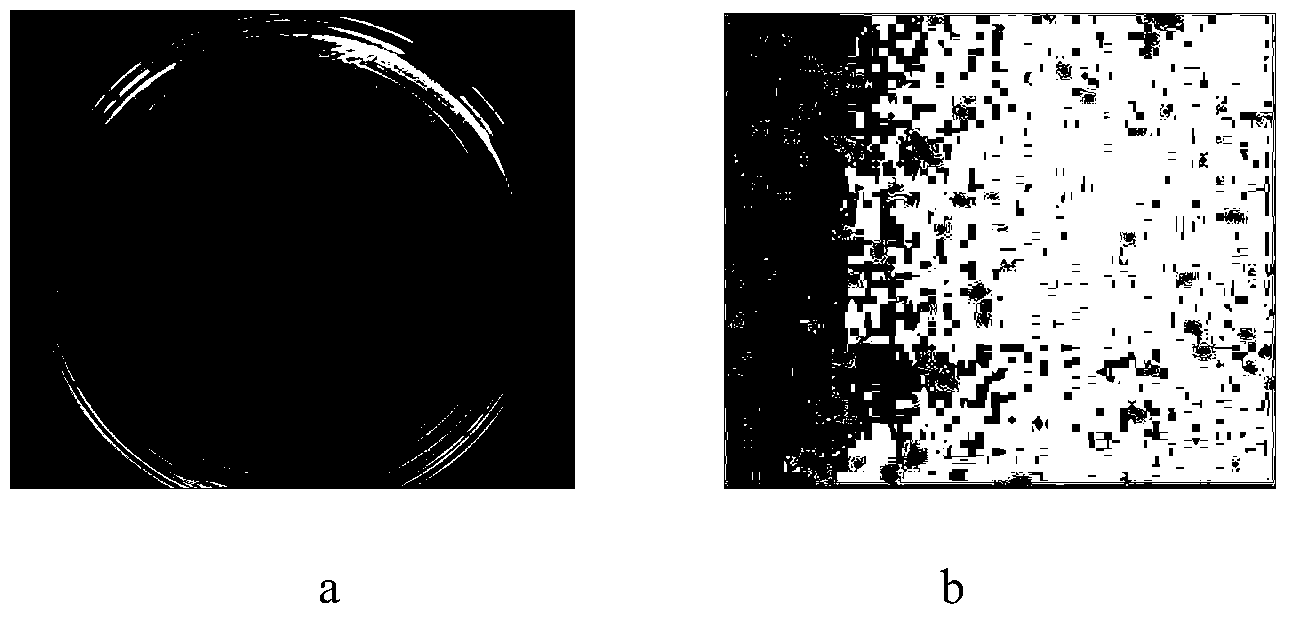Low-temperature resistant lactic acid bacterium for producing bacteriocin and application thereof
A bacteriocin-producing, low-temperature-resistant technology, applied in bacteria, applications, microorganism-based methods, etc., can solve problems such as human health threats and application doubts, and achieve strong growth activity, strong bacteriostatic activity, and strong specific growth rate. Effect
- Summary
- Abstract
- Description
- Claims
- Application Information
AI Technical Summary
Problems solved by technology
Method used
Image
Examples
Embodiment 1
[0018] 1. Experimental materials
[0019] 1.1 Sample collection
[0020] Strain MD-1 was isolated from the intestinal contents of wild cold-water fish Tinca tinca, and the samples of cold-water fish were collected from cold-water fish in the Irtysh River Basin in Altay, Xinjiang.
[0021] 1.2 Indicator bacteria
[0022] Escherichia coli (Escherichia coli), Listeria monocytogenes (Listeria monocytogenes) and Bacillus subtilis (Bacillus subtilis) were laboratory-preserved strains, and Staphylococcus aureus (Staphylococcus aureus) CICC21600 was purchased from China Industrial Microbiology Culture Collection Management Center.
[0023] 1.3 Medium
[0024] MRS medium: protein Chen 10g, beef extract 10g, yeast extract 5g, K 2 HPO 4 2g, diammonium citrate 2g, sodium acetate 5g, glucose 20g, Tween 801mL, MgSO 4 ·7H 2 O0.588g, MnSO 4 ·H 2 O0.25g, agar 15g, distilled water 1000ml, pH6.2-6.4, sterilized by high pressure steam at 121°C for 20min.
[0025] LB medium: peptone 10g, ...
Embodiment 2
[0081] Example 2 Application of Bacteriocin-Producing Low-Temperature Lactococcus lactis MD-1 in Preservation of Meat Products
[0082] The fresh mutton after slaughter is soaked in 70% alcohol for 30 minutes for surface disinfection. After the alcohol is taken out and drained, it is placed under a UV lamp for 15 minutes to sterilize the surface, and it is quickly placed in a refrigerator at 4°C for 8-10 hours. Cut the sample into small pieces, each about 100g. The bacterial suspension of the bacterial strain MD-1 cultivated to the logarithmic phase is serially diluted to make a dilution with a concentration of about 105-106 CFU / ml. Soak the meat sample in the prepared dilution solution of strain MD-1 for 10 minutes, take out and drain off the excess solution, and place it in a vacuum packaging bag made of aseptic composite material. The meat samples were packed in vacuum packaging bags and refrigerated at 4°C. Two parallel samples and a control sample were taken out every 24...
Embodiment 3
[0084] Example 3 Application of Bacteriocin Produced by Bacterial Strain Lactococcus lactisMD-1 in Fruit and Vegetable Juice Beverages
[0085] Bacillus acidoterus is an acid-resistant and heat-resistant spore-forming bacterium, which is most suitable for growth and reproduction in an environment of 25-60°C and pH 2.5-6.0, and is widely distributed in gardens, forest soils, and water used for beverage production . Therefore, Geobacillus acidum is easily brought into the production and processing of fruit juice and fruit juice beverages, causing the rancidity of fruit juice and fruit juice beverages and causing the corruption of fruit juice products.
[0086] Inoculate the fermentation supernatant of Lactococcus lactisMD-1 into the purchased Shennei Carrot Juice and Pantao Juice produced by Shennei Food Co., Ltd. without any preservatives. Each juice is divided into eight groups of test tubes, of which The seven groups are the test group, and the fermentation supernatant of La...
PUM
 Login to View More
Login to View More Abstract
Description
Claims
Application Information
 Login to View More
Login to View More - R&D
- Intellectual Property
- Life Sciences
- Materials
- Tech Scout
- Unparalleled Data Quality
- Higher Quality Content
- 60% Fewer Hallucinations
Browse by: Latest US Patents, China's latest patents, Technical Efficacy Thesaurus, Application Domain, Technology Topic, Popular Technical Reports.
© 2025 PatSnap. All rights reserved.Legal|Privacy policy|Modern Slavery Act Transparency Statement|Sitemap|About US| Contact US: help@patsnap.com



